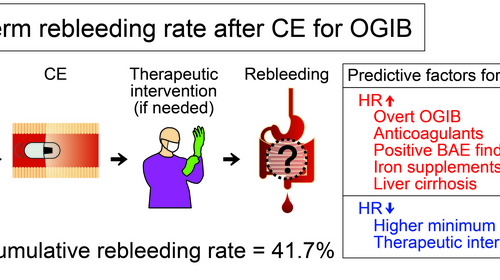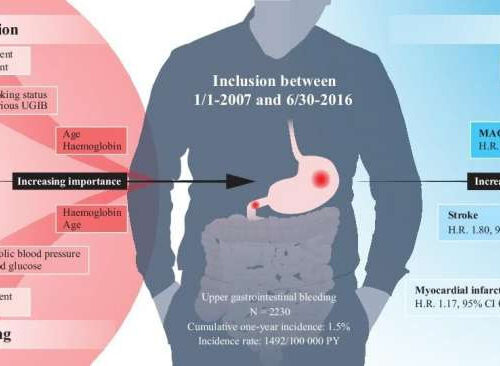by American College of Physicians Credit: CC0 Public DomainPhysicians should be aware of a potential serious adverse effect associated with sotatercept use. A case report detailing serious and recurrent gastrointestinal bleeding is published in Annals of Internal Medicine. Sotatercept is an investigational medicine that has shown positive results for treating adults with pulmonary arterial hypertension. In...
Tag: <span>gastrointestinal bleeding</span>
Obscure gastrointestinal bleeding: rebleeding rates and rebleeding predictors found
OSAKA METROPOLITAN UNIVERSITY IMAGE: THE OVERALL CUMULATIVE REBLEEDING RATE IN THE FIVE YEARS AFTER CAPSULE ENDOSCOPY (CE) WAS AS HIGH AS 41.7%. OVERT OBSCURE GASTROINTESTINAL BLEEDING (OGIB), ANTICOAGULANTS, POSITIVE BALLOON-ASSISTED ENTEROSCOPY (BAE) AFTER CE, IRON SUPPLEMENTS WITHOUT THERAPEUTIC INTERVENTION, AND LIVER CIRRHOSIS WERE FOUND TO BE INDEPENDENT PREDICTORS OF REBLEEDING IN PATIENTS WITH OGIB. EACH...
Study: Why are PPIs underused for the prevention of gastrointestinal bleeding?
Gastrointestinal bleeding is a potentially life-threatening condition. It is often linked to the use of medications like non-steroidal anti-inflammatory drugs, or NSAIDS, like ibuprofen and naproxen, aspirin and blood thinners. “Many of these drugs are prescribed to individuals who have heart disease,” said Jacob E. Kurlander, M.D., M.S., an assistant professor and gastroenterologist at Michigan Medicine and...
Eight predictors of upper gastrointestinal bleeding after heart attack
by Karolinska Institutet Graphical abstract. Credit: DOI: 10.1093/ehjcvp/pvab059 Researchers at Karolinska Institutet in Sweden have identified eight primary factors that increase the risk of a common bleeding complication after heart attack. Some of these factors are already known, but using machine learning techniques, the researchers have found additional predictors, such as smoking, blood pressure and blood...



